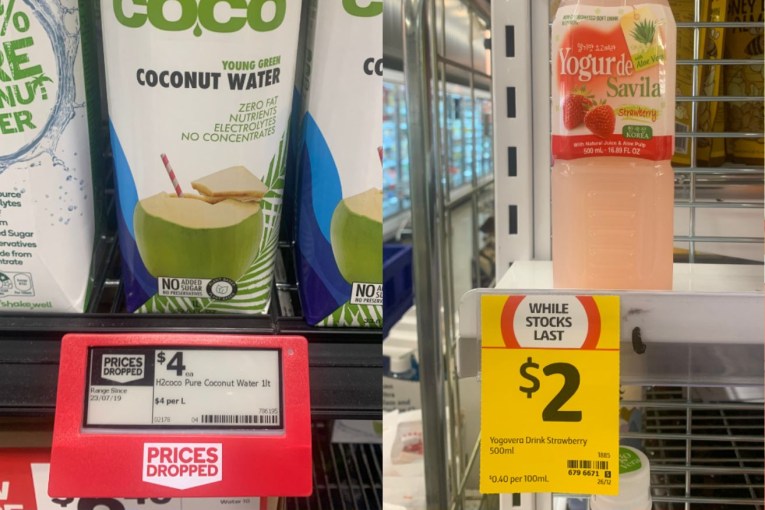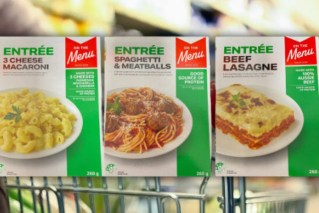How COVID killed Santa this Christmas
Christmas pageants, candlelight carols, and the annual shopping centre Santa photo are entrenched in nostalgia and long-held family traditions.
However, this year, COVID-19 social distancing measures may have become the modern-day version of Scrooge.
Parades have been either cancelled or adapted into static displays. Adelaide’s almost 90-year-old Christmas pageant, normally attended by more than 300,000 people, has been relegated to the Adelaide Oval and restricted to just 25,000.
Other festive social events, like ‘Carols by Candlelight’ are being cancelled around Australia.
Even organisers of Australia’s premier festive event, Carols by Candlelight at the Sidney Myer Music Bowl, advise they are: “…working behind the scenes with our partners and the government on how best to facilitate attendees in a COVID-safe, socially distanced manner, if permitted to do so.”
As states and territories begin to relax restrictions and shopping centres roll out their annual festive decorations, under existing social distancing measures, people will need to keep 1.5 metres from Santa and avoid physical greetings such as handshaking, hugs and kisses.
Sorry kids, but no hugs from Santa this year.
A brief history of Santa
Historian Adam English, like many other scholars, have linked the contemporary character of ‘Santa Claus’ to Saint Nicholas, the fourth century Greek bishop of Myra.
St Nicholas made his first inroads into popular culture as Santa Claus towards the end of the 18th century in New York.
It was reported that during the late 1700s Dutch immigrants, who had settled in New Amsterdam (New York) began to gather to honour the death of Saint Nicholas in early December.
The name Santa Claus evolved from Sinter Klaas, a shortened form of Sint Nikolaas, Dutch for Saint Nicholas.
The earliest known painting of the character Santa Claus is that of Robert Weir (1837).
Weir depicted Santa as elf-like, wearing a red cape and boots, exiting a fireplace. Though he carried a bagful of toys, he also had a frightening ‘sneer’ to reflect the punishing side of Santa; i.e., you have to be good to get toys.
Then on January 3, 1863, Thomas Nast, a political cartoonist for Harper’s Weekly, recreated the image of Santa in two illustrations for the magazine.
The first, illustrated Santa distributing presents in a Union Army camp, the second, features Santa in his sleigh, then going down a chimney, all in the periphery, while below a woman prays and a soldier leaning against a tree.
By 1866, Nast again reconstructed his image of Santa, to the version we know today , a round man-like gnome, with a white beard, dressed in a bright red suit trimmed with white ermine.
The ‘story’ of modern Santa Claus was born from the imagination of Clement Clarke Moore, a scholar who penned the poem, A visit from St Nicholas for the amusement of his six children in 1881.
Today, children would recognise this poem as Twas the Night Before Christmas.
Aligned to the release of the poem, Nast reillustrated the image of Santa as large jolly man, carrying gifts and smoking a pipe.
The shopping centre Santa
Retailers began to leverage the ‘invented tradition’ of Christmas in the early 1800s.
The earliest ‘narrative’ usage of Santa for commercial purposes, perhaps the first, was on a flyer for a New York jewellery store in the mid-1820s.
Stephen Nissenbaum, in his book The Battle for Christmas, suggested this image of Santa was reproduced in a variety of printed forms and then in 1841, an innovative Philadelphian shopkeeper even created a life-size model of this Santa thousands of children visited a store to see a life-size Santa Claus model, constructed by a life-sized model.

Happy and sad photos with Santa have been a staple of Christmas time. Photo: AAP
It wasn’t long until ‘live’ Santa Claus’ began appearing on street corners.
In 1891, Salvation Army Captain Joseph McFee set about raising funds to provide a free Christmas dinner to the destitute and poverty-stricken.
Unable to raise sufficient funds, he took a crab pot from the local wharf, hung it from a tripod at a busy intersection, with the sign: “Fill the Pot for the Poor — Free Dinner on Christmas Day.”
They began dressing up unemployed men in Santa Claus suits, with red kettles and ringing bells, and sending them into the streets of New York to solicit donations. Those familiar Salvation Army Santa Claus have been ringing bells on the street corners of American cities ever since.
At around the same time, some stores began to use ‘live’ Santa Claus’ in their window displays and toy departments and by 1910, the presence of a ‘live’ Santa became a requirement for any department store .
The business of Santa
Modern retail Christmas has evolved from a cluster of practices in social and commercial contexts.
Desperate to attract families and to encourage them to spend more time, from around mid-November, Santa Workshop’s, Grotto’s or Winter Wonderland’s miraculously appear in shopping centres.
Their appearance signals to start of Christmas shopping, extended trading and gift giving.
Santa Claus is a vital player in the rituals that surround the Christmas holiday. The meanings individuals attach to the shopping centre Santa Claus emerge in the process of social interaction.
In a consumer-oriented society, shopping centres have become hubs for of social interaction.
They offer an escape from the dull routines of daily life. Special events, entertainment and promotions, including Santa’s visit, regularly transform centres from an environment where “nothing unusual is happening”, to one characterised by wonder, excitement and fun.

Myer’s famous Christmas window pulls crowds for days and days. Photo: AAP
The business of Santa, at least until COVID-19 hit, was a viable business model, that created positive experiences in shopping centres and employment, for mostly older, retired men.
Companies like Scene to Believe , Santa for Hire, The Real Santa and the Professional Santa Claus School provide Santa Claus impersonators and photography services to hundreds of shopping centres throughout Australia, New Zealand and North America.
The Santa Claus Conservatory train potential Santa Claus ‘candidates’ in areas like “How to Become an Extraordinary Santa Claus” and “Being Santa in Malls and Retail Stores”.
It was estimated as far back as 2011, many senior Australians were undertaking seasonal work at Christmas time, often working as Santas in shopping malls around the country.
The nostalgia of Santa
Nostalgia has always been a relevant emotion at Christmas. I recall my father taking me to the John Martin’s Christmas Pageant in Adelaide during the 1970s. I have friends that still drag their adult kids to centres to ‘recreate’ that moment in time.
Nostalgia, derived from two Greek roots: “nostos” meaning to “return home’’ and “algos” referring to “pain or grief”, signals an emotion contains both pleasant and unpleasant components.
This “bittersweet” quality of the emotion is a distinguishing characteristic of the nostalgic condition. Nostalgia refers to an earlier period of one’s life, which may evoke memories of peaceful, pleasant times or of times of tension and turmoil.
However, nostalgia has become a commodity, that can be bought and sold.
Nostalgia marketing emerged from the 1970s, and relates to the creation of a brand identity based on heritage or nostalgia for a company’s past products/brands.
Hence, the invented traditions and rituals connected with Christmas department store windows, Christmas pageants and shopping centre Santa photos all aim to tap into the consumers’ sense of nostalgia, encouraging them back into shopping centres, time and time again.
Virtual Santa
Facing the prospect of a no ‘live’ Santas in shopping centres this year, management may have to consider virtual experiences.
Post-COVID Claus may come fully equipped with augmented reality experiences, VR elf outfits and Instagram-friendly photo opportunities.
Such technology debuted at ‘Fashion Outlets of Chicago’ in 2015 and featured a virtual reality ‘Magic Mirror’ that allowed visitors to become one of Santa’s elves and a ‘Naughty or Nice O’Meter’.

Would you like to FaceTime with Santa? That might be the only option this year. Photo: Getty
Last Christmas, Centennial, which runs a national portfolio of US shopping malls, replaced their traditional Santa sets with interactive augmented reality encounters, and a new crop of video-chat companies, like ‘Talk to Santa’ and ‘Welcome Santa’, are giving families the chance to connect with Santa from the comfort of their smart devices.
Just as shoppers have moved online because of COVID-19, it seems likely Santa is bound to follow.
_____________________________________________________________________
Professor Gary Mortimer is Australia’s leading retail expert, researcher and media commentator. He is based at Queensland University of Technology.
This article is republished from Medium








